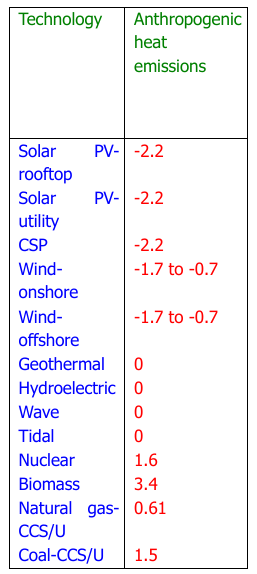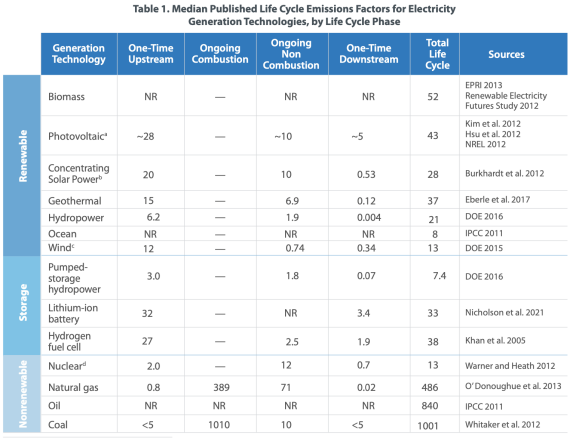 Arguments
Arguments
 Software
Software
 Resources
Comments
Resources
Comments
 The Consensus Project
The Consensus Project
 Translations
Translations
 About
Support
About
Support


Latest Posts
- Sabin 33 #25 - Are wind projects hurting farmers and rural communities?
- A worse-than-current-policy world?
- 2025 SkS Weekly Climate Change & Global Warming News Roundup #16
- Fact brief - Is climate change a net benefit for society?
- Skeptical Science New Research for Week #16 2025
- Climate Adam: Climate Scientist Reacts to Elon Musk
- Sabin 33 #24 - Is wind power too expensive?
- EGU2025 - Picking and chosing sessions to attend on site in Vienna
- 2025 SkS Weekly Climate Change & Global Warming News Roundup #15
- Fact brief - Is the sun responsible for global warming?
- Skeptical Science New Research for Week #15 2025
- Renewables allow us to pay less, not twice
- Sabin 33 #23 - How much land is used for wind turbines?
- Our MOOC Denial101x has run its course
- 2025 SkS Weekly Climate Change & Global Warming News Roundup #14
- Fact brief - Is Mars warming?
- Skeptical Science New Research for Week #14 2025
- Two-part webinar about the scientific consensus on human-caused global warming
- Sabin 33 #22 - How does waste from wind turbines compare to waste from fossil fuel use?
- Clean energy generates major economic benefits, especially in red states
- 2025 SkS Weekly Climate Change & Global Warming News Roundup #13
- Skeptical Science New Research for Week #13 2025
- Climate skeptics have new favorite graph; it shows the opposite of what they claim
- Sabin 33 #21 - How does production of wind turbine components compare with burning fossil fuels?
- China will need 10,000GW of wind and solar by 2060
- 2025 SkS Weekly Climate Change & Global Warming News Roundup #12
- Skeptical Science New Research for Week #12 2025
- Climate Fresk - a neat way to make the complexity of climate change less puzzling
- Sabin 33 #20 - Is offshore wind development harmful to whales and other marine life?
- Do Americans really want urban sprawl?
Archived Rebuttal
This is the archived Intermediate rebuttal to the climate myth "Solar energy is worse for the climate than burning fossil fuels". Click here to view the latest rebuttal.
What the science says...
|
The lifecycle emissions of solar energy are far lower than fossil fuel sources, with the emissions of coal being 23 times greater than solar PV while the emissions of natural gas are 11 times greater than solar PV. |
There is overwhelming evidence that the lifecycle emissions1 of solar energy are far lower than those of all fossil fuel sources, including natural gas2. On average, it takes only three years after installation for a solar panel to offset emissions from its production and transportation. Modern solar panels have a functional lifecycle of 30–35 years, allowing more than enough time to achieve carbon neutrality and generate new emissions-free energy3.
A National Renewable Energy Laboratory (NREL) report released in 2021 examined “approximately 3,000 published life cycle assessment studies on utility-scale electricity generation from wind, solar photovoltaics, concentrating solar power, biopower, geothermal, ocean energy, hydropower, nuclear, natural gas, and coal technologies, as well as lithium-ion battery, pumped storage hydropower, and hydrogen storage technologies.” The report found widespread agreement that all modes of solar power have total lifecycle emissions significantly below those of all fossil fuels. The report found specifically that the total lifecycle emissions for solar photovoltaic (PV) and concentrating solar power (CSP) panels were 43 and 28 grams of CO2-eq/KWh (carbon dioxide-equivalents per kilowatt-hour), respectively. Coal, by contrast, generated lifecycle emissions of 1,001 grams of CO2-eq/KWh, and natural gas generated lifecycle emissions of 486 grams of CO2-eq/KWh.
Figure 1: Total lifecycle emissions for different energy sources. Source: NREL.
To be fair, there are some outlier studies. For example, one study examined a worst-case scenario in which the coal-powered manufacture of inefficiently sized solar PV cells may contribute to greater lifecycle emissions than the cleanest and most efficient fossil fuel plants (Torres & Petrakopoulou 2022). However, the conclusion that solar is worse for the climate than fossil fuels is not backed up by NREL’s more extensive survey.
In addition to having smaller greenhouse gas emissions, solar power likewise outperforms fossil fuels in minimizing direct heat emissions. A 2019 Stanford publication notes that, for solar PV and CSP, net heat emissions are in fact negative, because these technologies “reduce sunlight to the surface by converting it to electricity,” ultimately cooling “the ground or a building below the PV panels.”4 The study found that rooftop and utility-scale solar PV have heat emissions equivalent to negative 2.2 g-CO2e/kWh-electricity, compared to the positive heat emissions associated with natural gas, nuclear, coal, and biomass.

Figure 3: The 100-year CO2e emissions impact associated with different energy sources’ heat emissions, measured in g-CO2e/kWh-electricity. Source: M.Z. Jacobson (reproduced and adapted with permission)
Looking at academic scholarship from outside of the United States, a 2022 University of Western Ontario study tracking the effect of anthropogenic heat emissions on global warming noted that solar technologies emit an “insignificant amount of heat.”5 Likewise, a 2022 analysis from India’s Hirwal Education Trust’s College of Computer Science and Information Technology describes the global impact of solar panel heat emissions as “relatively small.”6
Footnotes:
[1] Lifecycle emissions for energy technologies encompass emissions associated with the operation of an energy facility, such as combustion of fossil fuels. Lifecycle emissions also encompass upstream emissions associated with resource extraction, manufacturing, and construction of a facility, along with downstream emissions associated with decommissioning of a facility. And: Nat’l Renewable Energy Laboratory, Life Cycle Greenhouse Gas Emissions from Electricity Generation: Update (Sept. 2021) (Table 1). NREL calculates emissions intensity using grams of carbon dioxide equivalent per kilowatt-hour.
[2] Steffen Schlömer et al., 2014: Annex III: Technology-specific Cost and Performance Parameters, Climate Change 2014: Mitigation of Climate Change 1329, 1335 (2014); Carbon Footprint of Solar Panel Manufacturing, Cool Effect (June 1, 2021)
[3] What Is End-of-Life Management for Photovoltaics?, U.S. Dep’t of Energy Solar Energy Tech. Office (last visited March 25, 2024).
[4] Mark Z. Jacobson, Evaluation of Nuclear Power as a Proposed Solution to Global Warming, Air Pollution, and Energy Security, Dec. 22, 2019.
[5] Dimitre Karamanev, The Effect of Anthropogenic Heat Emissions on Global Warming, EGUsphere 2022. Note: this is a preprint and has an editor's note on the abstract.
[6] Sudesh Nagu Kadam et. al, Solar Panel Heat Emission and Its Environmental Impact, 2 Int’l J. Advanced Rsch. Sci. Commc’n Tech. 3 (Dec. 2022), 113, 116.
This rebuttal is based on the report "Rebutting 33 False Claims About Solar, Wind, and Electric Vehicles" written by Matthew Eisenson, Jacob Elkin, Andy Fitch, Matthew Ard, Kaya Sittinger & Samuel Lavine and published by the Sabin Center for Climate Change Law at Columbia Law School in 2024. Skeptical Science sincerely appreciates Sabin Center's generosity in collaborating with us to make this information available as widely as possible.
Updated on 2024-10-26 by Sabin Center Team.
THE ESCALATOR

(free to republish)

























































